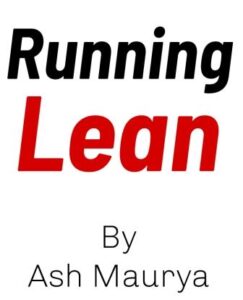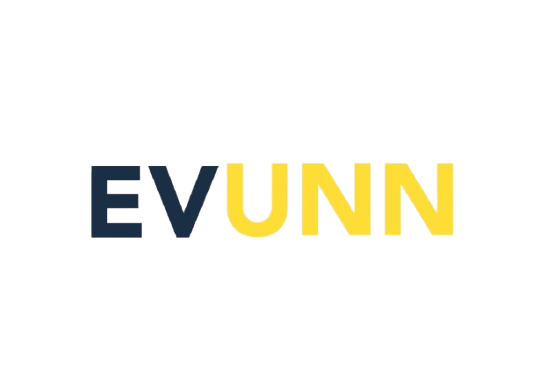Summary of The Lean Startup by Eric Ries

We need to seek to understand what customers truly desire, not just what they say they want or what we assume they should want.
Why We Recommend this Book
The Lean Startup by Eric Ries is all about action, rapid learning, and adapting quickly to what works.
It challenges the traditional approach of spending months (or years) perfecting a product before launching, only to realize customers don’t want it.
This book has shaped the way modern startups, tech companies, and even large corporations develop new products. Companies like Dropbox, Airbnb, Zappos, and Uber have used Lean Startup principles to refine their business models and scale successfully; building billion dollars businesses.
The Lean Startup
The Lean Startup Summary
Starting and running a business is hard. The “Lean Startup” makes it easier.
If you have been wondering when you will have the time to read “The Lean Startup”, we have put together the Lean Startup Summary to help you get the key ideas from the book in minutes.
We have only scratched the surface with this summary. Want more juicy details from the book?
Get the book here if you don’t have it already. You can also listen to the audiobook for free. Lets get started.
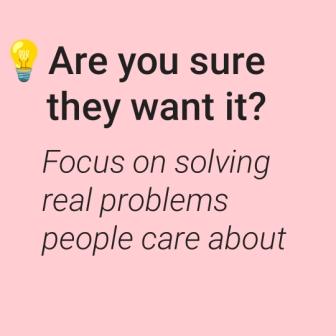
Introduction
What if you spend months (or even years) building a product, only to find out nobody wants it?
Most startups fail not because their founders aren’t smart or hardworking, but because they waste time, money, and energy on ideas based on assumptions rather than real customer needs. That’s where The Lean Startup by Eric Ries changes everything.
This book introduces a new way to build businesses—faster, smarter, and with less waste.
Instead of following a rigid plan, it teaches you to test ideas early, gather customer feedback, and adapt quickly using the Build-Measure-Learn loop. By starting with a Minimum Viable Product (MVP), you avoid costly mistakes and focus only on what truly works.
This book has had a profound influence on how startups and large companies approach product development and innovation and has led to a lot of business success.
🚀 Are you ready to stop guessing and start growing? Let’s dive in.
Click on the Tabs Below to Read The Lean Startup Summary
The Lean Startup teaches you how to build a new business or product by starting small and learning quickly.
Instead of spending lots of time and money making something perfect right away, you create a simple version first and see how people like it.
You then use their feedback to make it better step by step, which helps you avoid big mistakes and create something people really want.
The book is aimed at entrepreneurs, startup founders, product managers, and anyone involved in innovation or business development.
It is also valuable for leaders in larger organizations looking to foster a culture of continuous innovation.
“The Lean Startup” is a book that teaches people how to start and grow a new business in a smart way. Here’s a simple breakdown:
Introduction: Start
Imagine you have an idea for a new toy or game.
Instead of spending all your time and money making the perfect version right away, this book suggests starting small and testing your idea to see if kids really like it.
Chapter 1: Start
A startup is like a small, new business that’s trying to figure out what people want.
The book says it’s better to learn quickly what works and what doesn’t, rather than just guessing.
Chapter 2: Define
Before making the whole toy, you make a simple version of it (called a Minimum Viable Product, or MVP) to see if kids are interested.
This way, you don’t waste time making something no one wants.
Chapter 3: Learn
Once you have the simple version, you watch how kids play with it.
You learn from what they like and don’t like, and you can make the toy better based on what you discover.
Chapter 4: Experiment
You keep trying out new ideas, making small changes, and then testing them again.
The goal is to learn as much as you can with each change, so you can make the best toy possible.
Chapter 5: Leap
When you start, you have to make some guesses about what kids will like.
This chapter is about testing those guesses quickly so you can know for sure if your toy idea is good.
Chapter 6: Test
Instead of just guessing, you test your ideas by showing your toy to kids and seeing how they react.
If they like it, great! If not, you make changes and test again.
Chapter 7: Measure
You don’t just count how many toys you sell.
Instead, you look at things like how often kids play with the toy or how many tell their friends about it.
This helps you see if your idea is really working.
Chapter 8: Pivot (or Persevere)
If your toy idea isn’t working, you can make a big change (called a pivot) and try a different idea.
If it’s working, you keep going (persevere) and make it even better.
Chapter 9: Batch
When you make changes to your toy, do it in small steps.
This way, if something goes wrong, it’s easier to fix. Small steps help you improve faster.
Chapter 10: Grow
Once your toy is popular, you think about how to grow your business.
You could make different versions of the toy, tell more people about it, or find new ways to sell it.
Chapter 11: Adapt
As you keep going, it’s important to always be ready to change and improve.
If something doesn’t work, figure out why, fix it, and keep trying.
Chapter 12: Innovate
Even big companies can use these ideas to create new products.
They should think like startups, always testing and learning to stay ahead.
In the end, the book hopes that by using these ideas, more people can turn their cool new ideas into successful businesses that make things people really love.
1. Start Small and Test Ideas Early:
Action Point: Before investing a lot of time and money, create a Minimum Viable Product (MVP) — a basic version of your product to test whether customers are interested.
2. Focus on Learning What Works:
Action Point: Use customer feedback to learn which aspects of your product are valuable.
Treat each product iteration as an experiment to gather insights.
3. Measure What Matters:
Action Point: Track actionable metrics like customer retention, engagement, or conversion rates, rather than vanity metrics like total users or page views.
4. Pivot When Necessary:
Action Point: Be ready to change direction if your original idea isn’t working.
If the data shows that customers aren’t responding as expected, adjust your business model, product, or target market.
5. Iterate Quickly:
Action Point: Use the Build-Measure-Learn feedback loop to continuously improve your product.
Develop small updates, measure customer reactions, and learn from the results to inform the next version.
6. Avoid Waste:
Action Point: Don’t spend time and resources building features or products without first validating that customers want them.
Focus on creating value in the simplest way possible.
7. Create a Culture of Adaptability:
Action Point: Foster an environment where your team is encouraged to experiment, learn from mistakes, and adapt quickly.
Use techniques like the “Five Whys” to get to the root cause of problems and address them.
8. Focus on Sustainable Growth:
Action Point: Identify the growth engine that works best for your business (viral, sticky, or paid) and optimize your efforts around it.
Sustainable growth is built on a product that customers want to use and share.
9. Innovation Is Ongoing:
Action Point: Always be on the lookout for new opportunities to innovate, whether by improving your current product or by exploring new markets or ideas.
Apply the Lean Startup principles to keep your business agile.
10. Embrace Uncertainty:
Action Point: Accept that the future is uncertain, and plan to adapt as new information becomes available.
Stay flexible and open to change, using data to guide your decisions.
Overall Action Plan:
– Start by defining your assumptions about what customers want and then design experiments to test those assumptions.
– Build simple prototypes (MVPs) and launch them quickly to gather real-world feedback.
– Use the feedback to make informed decisions about whether to persevere, pivot, or iterate.
– Continuously measure your progress with actionable metrics, and always be ready to adapt your strategy based on what you learn.
By following these action points, you can reduce the risk of failure and increase your chances of building a successful, sustainable business.
Here are other interesting and recommended reading list related to the themes explored in “The Lean Startup by Eric Ries, for further reading:
- Masters of Scale podcast summary: How AirBNB was handcrafted by Chesky & Co.
- Book summary Testing Business Ideas by David J. Bland and Alexander Osterwalder
- Book summary of The Mom Test: How to talk to customers & learn if your business is a good idea when everyone is lying to you by Bob Fitzpatrick
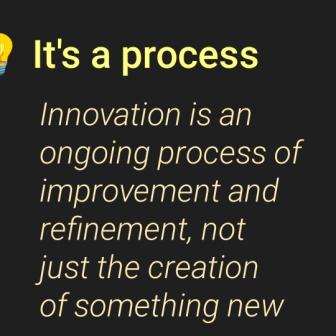
Eric Ries is an American entrepreneur, author, and pioneer of the Lean Startup movement.
Born in 1978, Ries studied computer science at Yale University, where he became involved in several startup projects.
His early ventures included a role as a software engineer at There.com, a 3D social network that ultimately failed, which provided him with valuable lessons on startup failure.
In 2004, Ries co-founded IMVU, a social entertainment company that allowed users to create 3D avatars and interact in virtual spaces.
It was during his time at IMVU that Ries began developing the ideas that would later become the Lean Startup methodology.
The challenges he faced in product development and market testing at IMVU led him to rethink traditional approaches to entrepreneurship.
“The Lean Startup” was published in 2011 and quickly became a bestseller, widely regarded as one of the most influential business books of the decade.
The book formalized the principles of the Lean Startup, which include the concepts of validated learning, the Minimum Viable Product (MVP), and the Build-Measure-Learn feedback loop.
Ries has since become a sought-after speaker, advisor, and thought leader in the startup community.
He has worked with large companies and organizations, helping them apply Lean Startup principles to foster innovation and agility.
In addition to “The Lean Startup,” Ries is also the author of “The Startup Way” (2017), which explores how larger organizations can innovate and grow using Lean Startup principles.
- Title: The Lean Startup: How Today’s Entrepreneurs Use Continuous Innovation to Create Radically Successful Businesses
- Author: Eric Ries
- Publication Date: September 13, 2011
- Publisher: Crown Business
- Pages: 336
- ISBN: 978-0307887894
- Genre: Business, Entrepreneurship, Management
- Available in e-book, hard cover and audiobook versions
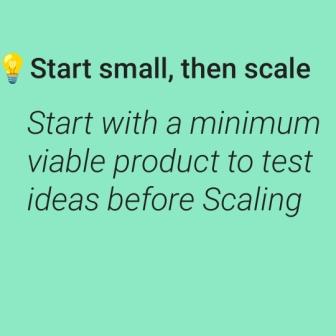
Course Curriculum
Test your Knowledge of The Lean Startup
-
Start your The Lean Startup Quiz
Evunn Concept
The Lean Startup and Running Lean by Ash Maurya share this concept: validate business ideas quickly, minimizing waste, and adapting based on real customer feedback.
The Lean Startup introduces the Build-Measure-Learn loop, encouraging startups to test assumptions with a Minimum Viable Product (MVP) before fully developing their idea.
Running Lean builds on this by providing a step-by-step process for testing and refining a business model using the Lean Canvas, a one-page plan that replaces traditional business plans.
Your Next Read
